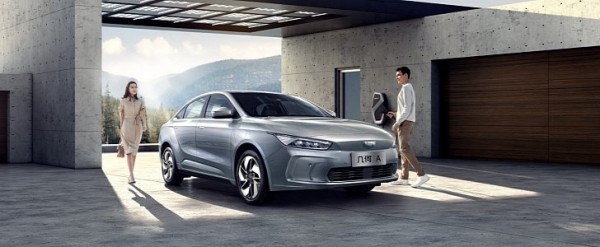
Those are bold words, let alone words from a company which lives and dies by profitability and consumerism. Despite these contradictions, the Geometry A sounds alright as a daily driver. With an average energy consumption of 13.5 kWh per 100 kilometers (62 miles), the electric sedan features a 51.9-kWh battery as standard.
Geometry offers a 61.9-kWh battery as an optional extra, increasing the NEDC-rated range from 410 to 500 kilometers (255 to 311 miles). Based on the price of electricity in Beijing, the Chinese brand claims that one kilometer of range costs the equivalent of one cent.
A permanent synchronous magnet motor provides the propulsion, providing up to 120 kW (163 PS; 161 horsepower) and 250 Nm (184 pound-feet) of torque. Acceleration from zero to 100 km/h (62 mph) takes 8.8 seconds, and as you’d expect, the A can charge from 30 to 80 percent in 30 minutes.
But wait, there’s more! Geometry makes a case for “the Super E Energy Station system, which can supply power to laptops, ovens, lamps, and other equipment with an external power plug, allowing users to enjoy outdoor life with ease.” The A also happens to be clever, the first EV in China to achieve L2+ intelligent drive according to Geometry.
L2+ is short for semi-autonomous driving technologies that bridge the gap between Level 2 and Level 3. Some of the highlights are Automatic Emergency Brake with Pedestrian Recognition (AEB-P) and full-speed intelligent adaptive cruise control (ACC) that works at speeds of up to 150 km/h (93 mph).








